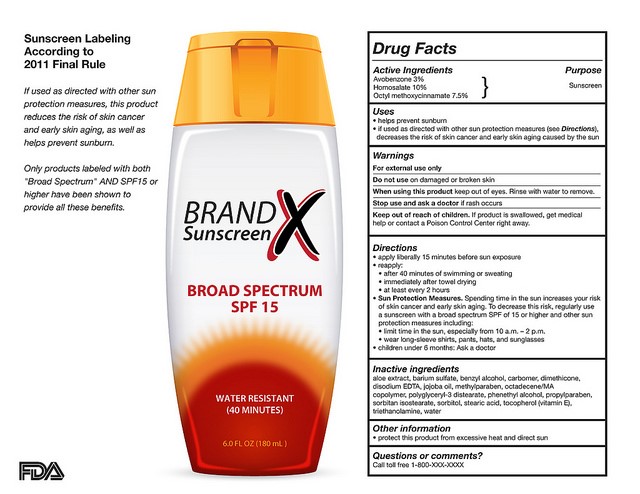Sunscreens: How to Read a Label, Expert Tips, etc.
Sunscreens are topical products that protect the skin from harmful UV radiation. They contain active ingredients that absorb, scatter, or reflect UV radiation before it reaches the skin’s surface.
Sunscreens use active ingredients to absorb, scatter or reflect the sun’s ultraviolet (UV) rays. By filtering out harmful UV rays, sunscreens help prevent sunburn, premature skin aging and the development of skin cancer. Various forms (e.g., lotion, spray, etc.) and types (e.g., water-resistant, fragrance-free, oil-free, etc.) of sunscreens are available. Finding the most suitable sunscreen that meets individual needs and is used correctly is crucial for skin protection.
Sunscreens are regulated by the U.S. Food and Drug Administration (FDA) as non-prescription, over-the-counter (OTC) drugs through a monograph system, which establishes various requirements for the product to be sold in the U.S. A monograph specifies the types of ingredients, dosage forms, testing methods, labeling requirements and other related details for a product category such as sunscreens. If a manufacturer follows the sunscreen monograph, sunscreen products do not require separate FDA pre-approval before they can be sold in the U.S.
The cosmetics and personal care products industry has long supported OTC monograph reform. As part of the revised regulation of sunscreens, the FDA issued a proposed Administrative Order in September 2021, largely mirroring provisions made in its 2019 Tentative Final Monograph (TFM). These include revisions and updates related to maximum SPF values, active ingredients, broad spectrum requirements and product labeling.
As part of the proposed Administrative Order, the FDA reiterated its request for additional data for some sunscreen filters currently approved in the U.S. to further evaluate their status as generally recognized as safe and effective (GRASE). Sunscreens made with these ingredients are not considered unsafe by the FDA and will remain on the market to be used while more data is collected.
Sunscreen manufacturers remain committed to working with the FDA to further demonstrate the safety of avobenzone, oxybenzone, octocrylene, octisalate, octinoxate, homosalate and ensulizole. These filters are approved globally in Europe and other regions around the world and have been used in formulations in the U.S. for decades.
UV radiation in sunlight is divided into several ranges depending on the wavelength. UVB radiation covers the wavelength range between 290 and 320 nanometers, and UVA radiation is between 320 and 400 nanometers. A sunscreen can be labeled “broad spectrum” if it provides UV protection across both the UVB and the UVA wavelength ranges.
According to the FDA, only products labeled with “broad spectrum” and having a sun protection factor (SPF) of 15 or higher protect against sunburn, skin cancer and premature aging if used as directed with other sun-protection measures.
Sunscreen effectiveness depends on several factors, including the SPF value, broad-spectrum protection, water resistance level and proper usage.
The FDA published the final rule in 2011, establishing testing and labeling requirements for the effectiveness of sunscreen. These requirements specify how currently marketed sunscreen products should be labeled and tested for UVA and UVB protection. The Drug Facts section provides directions for use to ensure proper sunscreen application and to protect consumers from the harmful effects of UV radiation.
Regardless of the active ingredients used, all FDA-approved sunscreen ingredients function by scattering, reflecting or absorbing UV rays. There is no difference in efficacy between sunscreens with organic or inorganic actives; they all must be formulated to meet their SPF and broad-spectrum label claims.

Source: FDA
Sunscreens are made in a wide range of SPF. According to the FDA, a sunscreen product’s SPF value indicates the level of sunburn protection it provides. Sunscreen products are tested to measure protection against sunburn caused by UVB radiation, as UVB is primarily responsible for sunburn, and labeled accordingly with the appropriate SPF value. Higher SPF values (up to 50) provide greater sunburn protection. Most dermatologists recommend an SPF of at least 30.
Sunscreen effectiveness depends on factors such as the SPF value, broad spectrum protection, water resistance level and product usage as directed. Additionally, the amount of protection provided by sunscreens depends on several factors, including:
- Skin Type: All skin types are susceptible to sunburn and other harmful effects of UV radiation. While everyone needs to take precautions to protect their skin, people with pale skin; blond, red or light brown hair; and those who have been treated for skin cancer need to be especially careful in the sun.
- Application amount and frequency: The FDA recommends applying sunscreen 15 minutes before sun exposure and reapplying every 2 hours, or more frequently if sweating or jumping in and out of the water. Sunscreen should be applied evenly to all exposed skin areas. Approximately one ounce of sunscreen lotion, equivalent to the size of a golf ball, is needed to cover the entire body.
- Water Resistance: FDA regulations require that if a sunscreen product’s front label claims water resistance, the product must specify whether it’s protective for 40 or 80 minutes while swimming or sweating. Additionally, manufacturers may no longer claim that their sunscreens are “waterproof” or “sweatproof.”
Follow these guidelines from the American Cancer Society (ACS) to protect your skin from the harmful effects of the sun:
- Avoid tanning booths, beds or lamps. These devices do not provide a ‘safer way’ to tan.
- Seek shade whenever possible when outdoors, especially between 10 a.m. and 4 p.m. when the sun’s rays are strongest.
- Wear sun-protective clothing such as long-sleeved shirts, wide-brimmed hats and UV-protective sunglasses.
- Apply a broad-spectrum sunscreen with an SPF of 30 or higher to all exposed skin even on a cloudy day.
- Reapply sunscreen every two hours or immediately after swimming or sweating.
- Schedule a yearly skin exam with your healthcare professional.